Try the Indie Perspective on the Vietnam War
PBS has begun airing the new Ken Burns documentary, The Vietnam War, and along with it will come fresh debate on the war, its lessons, and also the way the war has been written about and portrayed in films and documentaries. Over the years, we’ve reviewed more than a few books on the subject. We’ve identified these six indie books that you might want to take a look at after you learn about the war on PBS. They may widen your perspective.
Voices from Vietnam
The tragedies and triumphs of Americans and Vietnamesetwo people forever entwined by the legacy of war
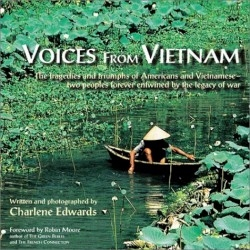
Charlene Edwards
Journeys
Unknown $40.00 (264pp)
978-0-9714020-5-8
Perhaps the most famous photograph of the Vietnam War was that of terrified children running from an aerial napalm attack in June 1972. One of them was nine-year-old Kim Phuc, naked and in agony as napalm seared her body. Now living in Toronto with her husband and two sons, Kim was one of seventy Vietnamese and Americans that the author interviewed during a decade of research.
Edwards writes that 58,000 Americans were killed in Vietnam and that four million VietnameseÃ’soldiers and civiliansÃ’were killed or wounded. She found that the countryside still contains unexploded bombs and hand grenades and that eleven million gallons of the defoliant Agent Orange were left behind, causing children to be born with defects. Edwards talked with soldiers (including former POWs), nurses, refugees, Amerasians whose fathers are American and mothers are Vietnamese, religious leaders, and Highlanders, who live in sparsely populated mountainous regions of the country. Some of the book’s most stunning photographs are of the Highlanders in their remote villages.
One of the most poignant interviews is with a survivor of four jungle prison camps whose Huey gunship was shot down. The crash smashed his knees and compressed several vertebrae and marked the beginning of a five-year odyssey in which many of his fellow prisoners died. “Life in the prisoner of war camps debilitated the body, the mind, and the spirit,” Edwards writes, “and turned civilized human beings into primal animals whose only struggle was to simply stay alive.”
Also interviewed is an Amerasian girl whose father never came back for her, an American soldier who was wounded three times and each time sent back into battle, a Vietnamese Navy frogman who discovered and removed three mines attached to a United States Navy ship, saving thousands of lives, and a former commander of the Viet Cong who was one of the planners of the Tet Offensive in 1968.
All but a few of the 172 photographs were taken by Edwards. Robin Moore, author of The Green Berets and The French Connection, wrote a foreword to the book. Through these graphic narratives and photographs, Edwards has created a lasting tribute to all those who suffered in a war that neither side won.
GEORGE COHEN (October 16, 2002)
Her Own Vietnam
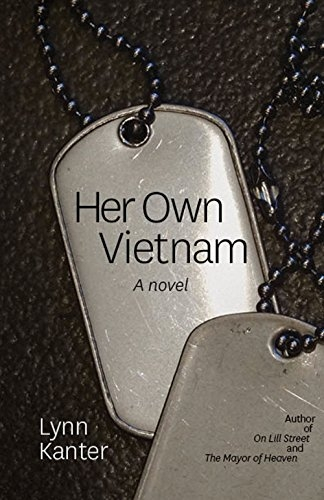
Lynn Kanter
Shade Mountain Press
Softcover $18.95 (211pp)
978-0-9913555-2-5
A woman’s story of wartime PTSD gathers complex characters to shed light on a little-discussed point of view.
Her Own Vietnam, by Lynn Kanter, is the story of Della Brown, who served as an army nurse in Vietnam but only begins to address her trauma decades later, when an old friend who shared that experience contacts her out of the blue. Kanter portrays Della’s painful chronicle with sensitivity and surrounds her with a family that is imperfect but, for the most part, making an effort. The resulting novel is insightful in telling of the little-known struggles of women “in that green and poisoned country.”
Della, now an oncology nurse, is divorced, and her daughter, a recent college graduate, is so distant as to feel inaccessible. Della thought she could leave Vietnam behind, but when she gets a letter from a fellow army nurse and once best friend, Charlene, it all comes tumbling back: the recurring nightmare, the insomnia, and finally a frightening flashback that threatens her present life. Unlike in the years just after the war, Della is sober, unable to hide inside a bottle. She’s been rejected from support groups for veterans with PTSD and for female victims of violent crimes. The new struggle is to talk about what she experienced—things her family is reluctant to hear—and maybe, if she can stand it, to see Charlene again.
Della’s inner struggles feel intimate, compelling, and all too real. The characters that surround her are equally engaging and fully formed: complex, well-meaning women laboring not only with the best way to comfort but with their own obstacles too. This novel, which reads like a memoir, is thoughtful and introspective, but still employs suspense as Della moves forward in time but not necessarily in terms of her own healing.
Her Own Vietnam is well written, compassionate, and perceptively told, addressing the trauma felt by the “invisible” women in Vietnam. While not political in nature, it may serve as a tool for asking difficult and important questions in that regard. The final trauma that closes this discerning novel might just bring things into perspective and finally allow Della to make peace with herself.
JULIA JENKINS (February 27, 2015)
The American South and the Vietnam War
Belligerence, Protest, and Agony in Dixie
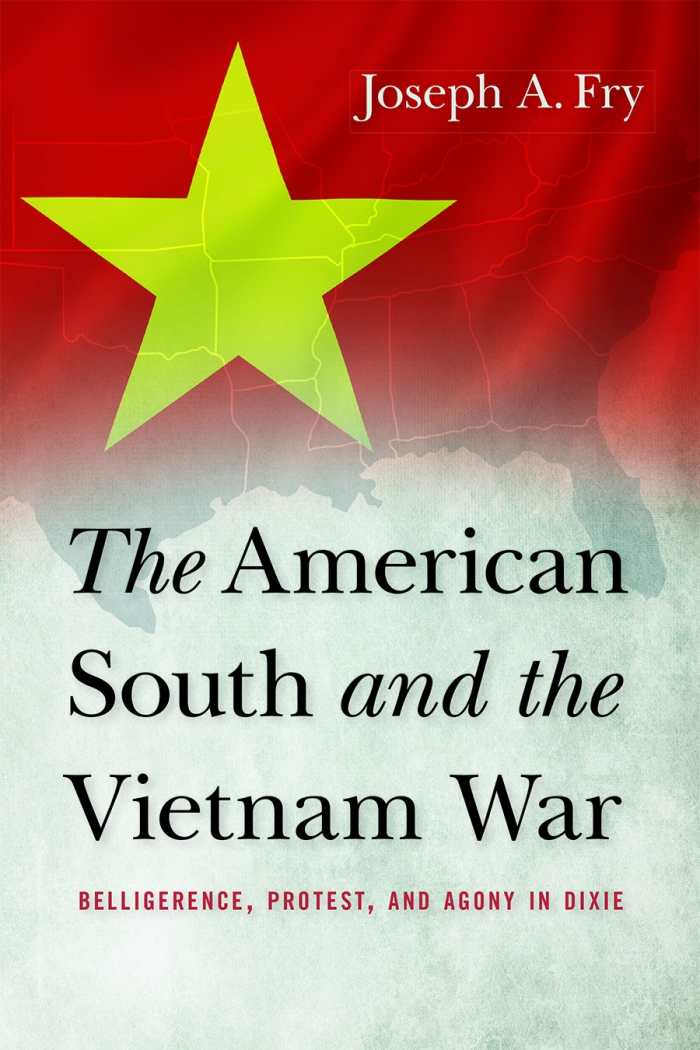
Joseph A. Fry
The University Press of Kentucky
Hardcover $40.00 (456pp)
978-0-8131-6104-4
Buy: Local Bookstore (Bookshop)
The South’s storied charm and civility are overshadowed by more hostile tendencies in this account of the role the region played in the Vietnam War. Joseph A. Fry, who has written extensively about the eleven states of the former Confederacy, argues that an inherent aggressiveness toward outside forces, such as “atheistic Communism,” and a hidebound sense of honor, contributed to what many have come to think of as the nation’s singular foreign-policy debacle.
He notes that legislators from the South, with a few notable exceptions, were key in providing the funding and political will to prosecute the war, and it was Lyndon B. Johnson of Texas, who vowed, even as his credibility crumbled, “I don’t want to be the first president to lose a war.” Secretary of State Dean Rusk was from Georgia, and General William Westmoreland was from South Carolina, and southerners served as soldiers in numbers disproportionate to their states’ populations.
Fry considers attitudes formed during slavery and its aftermath as a factor and cites comments about foreign policy down through southern history as evidence, including an editorial in the Wilmington, North Carolina, Morning Star about the proposal to make Hawaii a territory. “Dixie has a sufficient stock of mongrelism without taking in the nut brown islanders of the South Pacific,” the paper opined.
Fittingly, the past is alluded to in a quote at the end of the book by a Mississippi veteran: “Vietnam was much like the Confederacy … a lost cause with thousands of people dying for nothing.”
THOMAS BEVIER (May 27, 2015)
Women in Vietnam
The Oral History
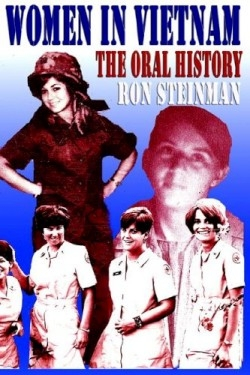
Ron Steinman
T.V. Books
Unknown $12.95 (284pp)
978-0-9742894-3-4
Although there are countless films, books, documentaries, and oral accounts of the male experience in the Vietnam War, there is little or nothing about the approximately 7,500 women who served in South Vietnam. The United States Government, the general public, and even the veterans themselves are responsible for this lack of recognition. The time for anonymity has ended. With the help of the Women’s Vietnam Memorial Project and documentarians like Ron Steinman, these women will get the recognition and public honor they deserve.
Ron Steinman was a journalist and bureau chief with NBC in Vietnam from 1966-1971 and witnessed the work of many women on the front lines. Perplexed that these women went without recognition, Steinman, author of The Soldier’s Story: Vietnam in Their Own Words, produced a documentary for The Learning Channel about the Women’s Vietnam Memorial Project, a statue that would memorialize women who served in any capacity during the war. The television program was limited by time, so Steinman had the women’s entire interviews transcribed for this collection. It is an account of survival and service, told in their own words.
The interviews cover all types of service that women were involved in: from nurses to army administration to Red Cross volunteers. No matter what area, each woman shared similar experiences with the Vietnamese people, with the soldiers they cared for, and with the community that they returned to.
Lily Jean Adams, an army nurse stationed in the 12th Evacuation Hospital in Cu Chi, was exposed to Agent Orange during her service. Out of all the destruction she describes, her only regret is that she feels she has created in her children “a genetic time bomb,” and she can discuss her medical difficulties only with military doctors.
While nurses saw most of the carnage, others were not immune. Marilyn Roth, a member of the Women’s Army Corps, felt the women and men in Vietnam were “like brothers and sisters.” Many women noted that men were grateful to see them. They were representatives of someone’s wife, mother, sister, or daughter—sometimes at the moment of death.
Air Force Flight Nurse Jackie Knoll, who served in the Phillipines, described holding a young man in her arms that had been severely wounded and sympathized with him. She knew he was “worried about going back and facing family, friends and those who were used to him as he was before. He was worried that he might not be accepted by others.”
Susan Bradshaw McLean, a twenty-two-year-old Red Cross Donut Dolly in Qui Nhon, now teaches and discusses Vietnam in her classroom because she wants to “pass along what happened.” She, like many of the women who were not military, want the truth to be known because, as she says, they get “no recognition for their role in Vietnam, no medical benefits and… not even a flag to cover [their] coffin when [they] die.”
The public was and is still incredulous that women served in Vietnam. The U.S. Government aided in this denial by designating many females as male, in their records. Nevertheless, these women were called to service and were volunteers. Most of them suffer from some form of post-traumatic stress disorder, if not physical ailments, due to their experiences. Their healing process will be long, just as any veteran’s is, but it starts with recognition. (August 2000)
KRISTIN PUTCHINKSI (June 15, 2000)
The Price They Paid
Enduring the Wounds of War
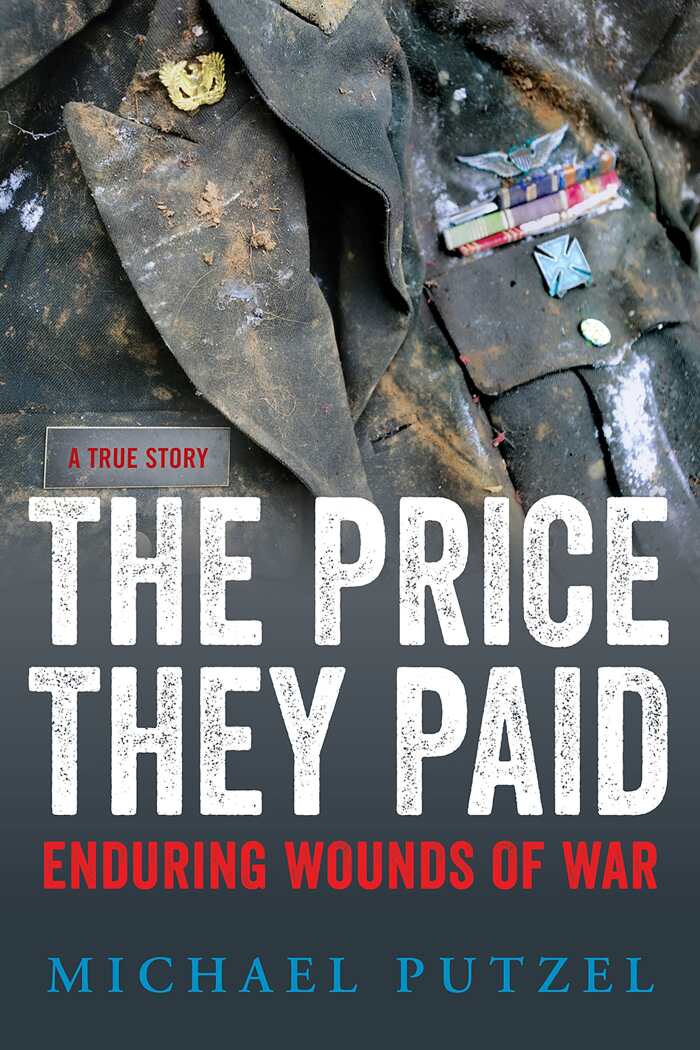
Michael Putzel
Trysail Publishing
Softcover $14.99 (345pp)
978-0-9861321-0-0
Buy: Local Bookstore (Bookshop)
A Vietnam War correspondent poignantly shares the perilous stories of US chopper pilots and crews and the PTSD that ravaged their lives ever after.
The helicopter battles of the failed, “secret” 1971 incursion into Laos were some of the bloodiest campaigns of the Vietnam War. In this attempt to cut off North Vietnam’s major supply route, the Ho Chi Minh Trail, the United States and South Vietnam’s best trained forces were outmatched by North Vietnam’s combat-hardened army. The bravery of US chopper pilots and crews, so vividly portrayed in Michael Putzel’s important The Price They Paid: Enduring Wounds of War, is remarkable because by this time, the war had demoralized both citizens on the home front and US forces, who saw no light at the end of the tunnel and often turned to drugs, alcohol, and officer fragging to cope with daily dangers.
Putzel covered the wars in Vietnam, Laos, and Cambodia for the Associated Press and served as Washington bureau chief for the Boston Globe from the Nixon through the Clinton administrations. His wartime experiences contribute to the gripping you-are-there narrative, which will introduce readers—even those who have read widely about the war—to the perils facing chopper crews who flew twenty feet off the ground in small, lightly protected crafts.
The book follows the exploits of Major James Newman, Commanding Officer of C Troop Air Cavalry, simply known as Condor 6. Newman was an enlisted man’s soldier, a grunt who reluctantly accepted a commission. He became a major who was decorated for bravery and earned the admiration of his men for never leaving a soldier behind. Although most of Newman’s men were saved, even those suffering grievous injuries, they fought and continue to fight a second war against post-traumatic stress disorder. The second half of the book tells movingly of the broken lives the former soldiers and their families endured, ravaged from PTSD.
At times, the narrative is mired in too much military jargon and details about rescue missions and weaponry. However, this is not significant when compared to the author’s skill at relating how Newman and his fellow Condors never stopped paying the price, suffering physical and psychological torments for the rest of their lives.
KARL HELICHER (November 27, 2015)
Writing Vietnam, Writing Life
Caputo, Heinemann, O’Brien, Butler
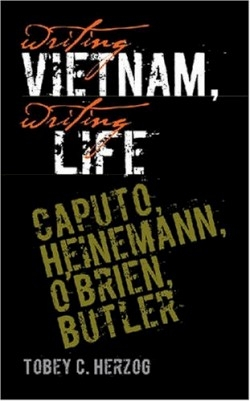
Tobey C. Herzog
University of Iowa Press
Unknown $39.95 (240pp)
978-1-58729-631-4
“If you can write a good war story, you could write anything,” says Larry Heinemann, one of the four authors included in this collection of interviews conducted by Herzog in 2005. Herzog, like the authors interviewed, is a Vietnam vet; he’s also an English professor at Wabash (Indiana) College and the author of Vietnam War Stories: Innocence Lost. These particular authors were chosen because they have themselves written enduring, timeless war stories, which according Herzog, “present engaging characters, psychological realism, and moral gravity. Most important, these stories reach readers at gut level.”
Each author is questioned about his roles as a son, a soldier, and a writer. Herzog then explores the shadowy relationship between memory and imagination. Also included are most helpful chronologies of the authors’ lives, which clarify the dialogue between Herzog and the writers. Caputo, the only commissioned officer, served in Vietnam from 1965-66; Heinemann served from 1967-68; Tim O’Brien from 1969-70; and Butler in 1971.
Interestingly, the writers, with the exception of Butler, all express a “heart of darkness theme,” in which the soldiers in their novels show a dark side—a loss of humanity—as they struggle to survive the living hell of combat. Butler displays a different approach, as shown in his 2003 Pulitzer Prize-winning collection of stories, A Good Scent from a Strange Mountain. More than any other American author, he successfully portrays the war through the lives of the Vietnamese. Butler is the only author in this book who spoke Vietnamese and he developed a love for the county’s people and culture. Something else that differentiates him is that he spent his tour in counterintelligence and was not in combat like the other three writers.
The ten-page conclusion is an important part of the book because in it Herzog ties together nicely the often-rambling (and unavoidable) interviews. Despite being men from different backgrounds, all agree that it was the war that made them writers, and all display a varying degree of cynicism about the government.
This book is aimed for aspiring creative writers who want to learn more about writing techniques. It is also useful for established authors, especially those who have written about war. The dialogue elicited from Herzog’s thought-provoking questions will reward both audiences.
Hannah Hohman
